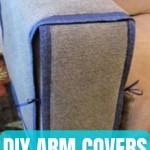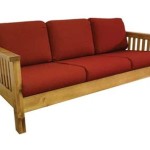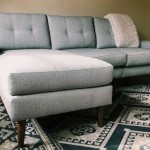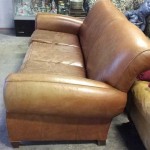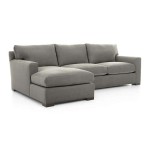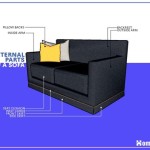Parts of a Sofa
Sofas, central elements in most living rooms, are complex pieces of furniture composed of numerous interconnected parts. Understanding these components can be beneficial when purchasing, maintaining, or repairing a sofa.
Frame
The frame provides the underlying structure and support for the entire sofa. It dictates the sofa's shape, durability, and longevity.
- Material: Common frame materials include hardwood (like kiln-dried oak, ash, or maple), softwood (like pine), engineered wood, or metal. Hardwood frames generally offer greater durability.
- Construction: Frames can be constructed using various joinery techniques, including corner blocks, dowels, screws, and staples. Stronger joinery methods contribute to a more stable and long-lasting frame.
- Suspension System: The suspension system attaches to the frame and supports the cushions. This system significantly impacts the sofa's comfort and lifespan.
Suspension System
This system is crucial for comfort and support. It bridges the gap between the frame and the cushions, affecting how the sofa feels when seated.
- Sinuous Springs (No-Sag Springs): Pre-formed, S-shaped wires attached to the frame provide a firm and resilient base. They are widely used in modern sofas.
- Eight-Way Hand-Tied Springs: Coiled springs individually hand-tied to the frame create a highly responsive and comfortable seating experience, though they are more expensive.
- Webbing: Interwoven straps of fabric, often jute, offer a budget-friendly suspension option. While initially comfortable, webbing can sag over time.
- Elastic Webbing: Offers more give than traditional webbing and is often used in combination with other suspension types.
Cushions
Cushions contribute significantly to the sofa's comfort and aesthetics. Various fillings and constructions provide different levels of support and softness.
- Foam: Polyurethane foam is a common cushion filling, available in various densities and firmness levels. High-density foam offers greater support and durability.
- Down Feathers: Down feather cushions provide a luxurious, plush feel but require regular fluffing and may not offer as much support as foam.
- Fiberfill: Synthetic fibers offer a hypoallergenic alternative to down, often used in combination with foam for added comfort.
- Spring Down Cushions: Combine the support of innerspring coils with the softness of down feathers for a balance of comfort and durability.
- Cushion Cores: Some cushions incorporate a core wrapped in softer materials. These cores can be made of foam, down, or a combination.
- Casings: Cushion casings enclose the filling material and are typically made of fabric or a combination of fabric and ticking.
Upholstery
The upholstery is the outermost layer of the sofa, determining its appearance and feel. It’s subject to significant wear and tear.
- Fabric: Various fabrics, including linen, cotton, velvet, microfiber, and leather, are used for sofa upholstery. Each fabric offers unique properties in terms of durability, texture, and maintenance.
- Pattern and Color: Upholstery comes in a vast array of patterns and colors, allowing for customization to suit individual preferences and interior design schemes.
- Weave: The weave of the fabric affects its durability and appearance. Tightly woven fabrics tend to be more durable.
Legs
Sofa legs provide support and contribute to the overall aesthetic. They vary in style, material, and height.
- Material: Sofa legs can be made from wood, metal, or plastic.
- Style: Leg styles range from traditional cabriole legs to modern tapered legs, impacting the sofa's overall design.
- Height: Leg height influences the sofa's ground clearance and can visually alter its proportions.
Other Components
Various additional components contribute to the sofa's functionality and aesthetics.
- Armrests: Provide support and comfort while seated. They can be padded, rolled, or straight, and their design influences the sofa's overall style.
- Back: The back of the sofa provides support and can feature various design elements, including tufting, pillows, or a tight back.
- Skirt/Base: A fabric panel often conceals the sofa's legs and frame, contributing to a more polished look. It can be tailored or pleated.
- Trimmings: Decorative elements like nailhead trim, piping, or fringe can enhance the sofa's visual appeal.

What Are The Parts Of A Leather Sofa Currier S Real Furniture

Image Result For Parts Of A Sofa Interior Design Instagram Images Furnishings

18433 By Stanton Furniture 184 33 Sofa Chaise Brenner S

Measuring Upholstery 101 Part 2 Sofa

How Sofa Is Made Material Making History To Make Used Parts

Replacement Parts For Wicker Sofa And Coffee Table Set Backyard Expressions

What S In My Sofa

This Couch Is Long Full Of Friendship Tiny Moving Parts

Couch Sofa Set Manufacturers Furniture Legs

2 Pieces Living Room Sofa Set Modern Couch With Loveseat And 3 Seater Upholstered For Bedroom Office Beige Com

